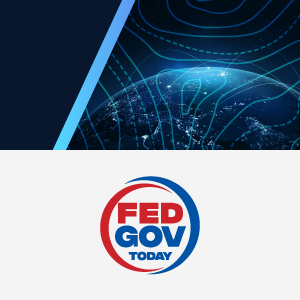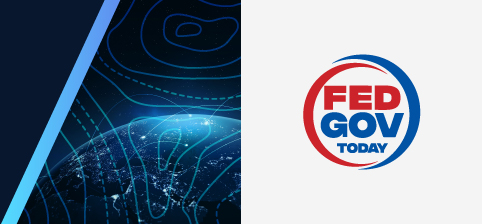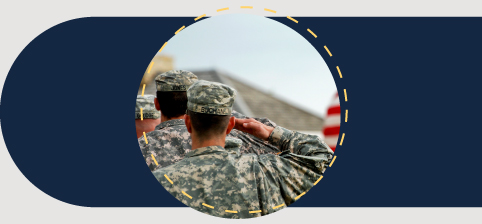Over the past couple decades, geospatial intelligence has evolved dramatically to encompass new realms that were previously only a dream and now – thanks to technology — have become a reality. At the United States Geospatial Intelligence Foundation’s (USGIF) GEOINT 2023 Symposium held in St. Louis, Missouri, Government, military, industry and academic leaders gathered to celebrate the 20th anniversary of the event as the largest annual gathering of geospatial intelligence professionals in the nation and discuss ways to further the mission. This year’s theme, “From Maps to Metaverse,” gave tribute to the advancements within the GEOINT discipline and highlighted the innovative ways technology can help solve current national security challenges.
 The Current Metaverse
The Current Metaverse
One of the overarching questions from the symposium was – what is the metaverse? From interactive whiteboards to keynote sessions, numerous experts chimed in to offer their insight on the topic including Christopher Johnson, Deputy Chief Technology Officer at the National Geospatial-Intelligence Agency (NGA), who defined the metaverse as a virtual representation of the world that has evolved in complexity over time. He elaborated, “The metaverse really isn’t a thing. It is more of a concept. It is how we interact with information in a new and novel way that we’ve never done before.” Johnson believes that the metaverse will fundamentally transform the way the world operates. The key to building an effective strategy for this shift will be technologists and end-user partnerships. According to Johnson this collaboration will look different than traditional Government partnerships and will require in-depth face-to-face conversations on the personal applications of the metaverse instead of just the engineering and design specifications.
While the current capabilities are barely scratching the surface of what could be possible for the metaverse, Johnson sees tremendous potential for utilizing the technology within the GEOINT community particularly for immersive training and military operations. By leaning in, exploring additional use cases and creating standards that can grow with the technology, Johnson believes it will unlock a whole new level of possible.
Enabling the Metaverse of the Future
The customization and adaptability potential make the metaverse both harder to define and to institute governing policies. Emerging agile software development with daily feature updates will require open standards to be implemented for effective and secure delivery. Johnson says it is imperative to start the process of creating these standards now and recommends the Government lean on international nonprofits to adapt some of the current standards and enable further technology development and implementation.
Dan Opstal, Acting Director of the National Civil Applications Center at the US Geological Survey, highlighted the role of data within the metaverse and the need to evaluate both the new ways data can be viewed and how much data the metaverse ingests to be able to operate. Opstal shared that a common theme for agencies and technologists is navigating oversight and privacy especially as the metaverse continues to expand and develop. Artificial Intelligence (AI) and machine learning (ML) will play a large role in sorting and standardizing the data for usage and close collaboration will be vital for instituting the legal frameworks to maximize these technologies.
Over his 40-year career at the organization Mark Chatelain, Chief Information Officer at the NGA, has witnessed the evolution from maps to the metaverse and noted the difference in requirements between the two. For maps, only a printing press and simple computer were necessary to display the information; however, with the metaverse and immersive AI, it necessitates immense computational capabilities and mobile communications to be invented and perfected for widespread implementation. Chatelain predicts that cloud data solutions and partnerships will be vital for storing the massive amounts of information that is expected to increase by over 1,500% in the next seven years. In addition to the data analysis, cloud and storage solutions, the NGA is also prioritizing the mobilization of its analysts to be able to work virtually and not be tied down to one location due to data access and computational power for high quality graphics at high speeds.
Maintaining and Improving the Workforce
To be able to modernize and adapt with the innovations in the field, the GEOINT community is looking into practical ways to invest in the current workforce and attract new talent. NGA leadership anticipates that the new generation’s fluency with technology will be an asset but also require a huge cultural change.
Ian Zearfaus, Director of the Human Capital Advanced Capabilities Office at the NGA, explained how offering visibility into all organization roles through an assignments marketplace is one new initiative that has opened up flexibility for employees. By encouraging lateral career movement, employees can advance further through exposure to new opportunities and skill growth. The NGA has seen great success with this initiative for the current workforce and it has become increasingly popular with the next generation as well. The NGA focuses on establishing cross-cutting and leadership competencies that provide employees with easily transferable skills within the organization. Zearfaus foresees data literacy, critical thinking and the ability to forge partnerships to continue to be highly sought after proficiencies. NGA coaching programs have also been a catalyst for employees to seek out micro-learning environments, find ways to maximize their strengths and ultimately climb an un-traditional career ladder to accomplish their goals. Additional innovative training methods have included role playing with virtual avatars to simulate co-worker and partner engagement and a pilot public-private talent exchange program with the Director of National Intelligence (DNI) to facilitate officer collaboration with the tech industry. In total, these efforts align with the NGA Strategic Workforce Plan to prepare for the workforce of 2026-2030 by leveraging internal talent and modernizing positions to align with future mission needs.
Overall, the GEOINT 2023 Symposium provided attendees with one of the most consistently presented solution drivers – the chance for collaboration and partnerships. Equipped with both the educational knowledge of the current themes in the GEOINT discipline and the perspective offered by agencies and industry, members of the broader GEOINT community left empowered to effectively utilize technology and achieve new heights.
To learn more about the topics discussed at GEOINT, listen to Francis Rose’s Fed Gov Today podcasts Part 1 and Part 2 co-sponsored by Carahsoft.
*The information contained in this blog has been written based off the thought-leadership discussions presented by speakers at GEOINT 2023.*






